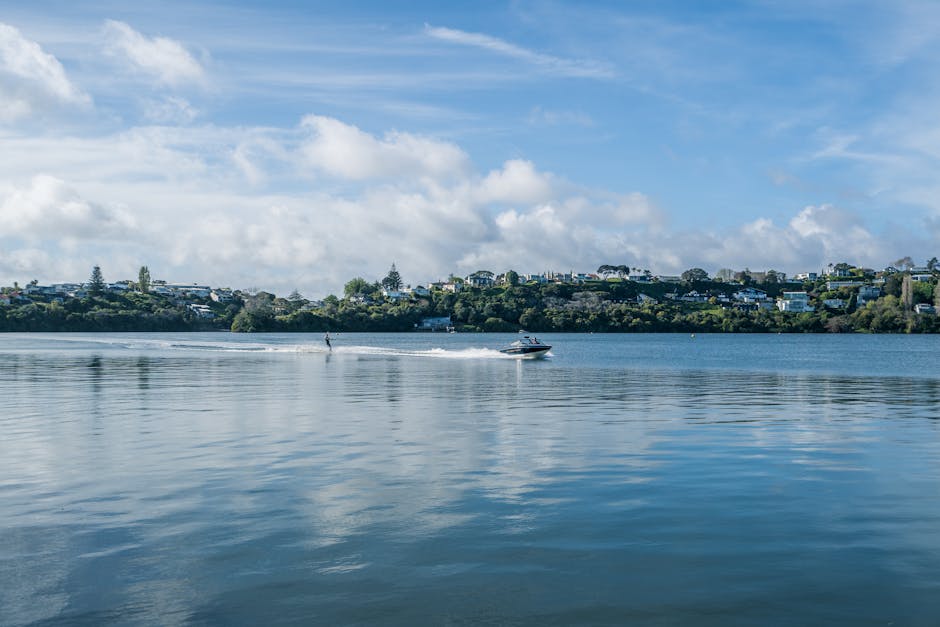As we venture into 2025, sustainable travel trends are reshaping the global tourism landscape in profound ways. Travelers are no longer satisfied with simply visiting destinations; they’re seeking meaningful experiences that align with their values while minimizing environmental impact. This shift represents a fundamental transformation in how we explore our world, with sustainability at its core.
The travel industry is responding to this evolution with innovative offerings that cater to eco-conscious adventurers, digital nomads, and experience-seekers alike. From carbon-neutral journeys to immersive local experiences, the future of travel is being written by those who understand that how we travel matters just as much as where we go.
In this comprehensive guide, we’ll explore the most significant sustainable travel trends of 2025 that are defining this new era of tourism, providing insights for both travelers and industry stakeholders looking to navigate this changing landscape.
The Rise of Regenerative Tourism

Photo by The Lazy Artist Gallery on Pexels
Sustainable travel has evolved beyond simply reducing negative impacts to actively creating positive change. In 2025, regenerative tourism represents the next frontier in responsible travel, with travelers increasingly seeking opportunities to leave destinations better than they found them.
This shift from sustainability to regeneration is evident in the growing popularity of travel experiences that contribute directly to environmental conservation and community development. Travelers are participating in reforestation projects, coral reef restoration initiatives, and community-based tourism ventures that funnel resources directly into local economies.
Destinations worldwide are embracing this trend by implementing policies that support regenerative practices. Some are introducing visitor caps to prevent overtourism, while others are developing programs that channel tourism revenue into conservation efforts. Hotels and resorts are also joining the movement, with many properties now featuring on-site organic gardens, renewable energy systems, and zero-waste operations.
For the conscious traveler in 2025, the question has shifted from “How can I minimize harm?” to “How can my visit actively benefit this place?” This mindset is driving demand for travel experiences that offer tangible positive impacts, whether through carbon-negative accommodations, community-led tours, or conservation-focused activities.
Travel companies are responding by creating packages specifically designed around regenerative principles, offering travelers clear information about how their journey contributes to local environmental and social well-being. This transparency is becoming a competitive advantage as more travelers base their decisions on a company’s regenerative credentials.
Eco-Friendly Adventures and Carbon-Neutral Travel

The urgency of climate change has propelled sustainable travel to the forefront of tourism priorities in 2025. Carbon-neutral and even carbon-negative travel options have transitioned from niche offerings to mainstream expectations, particularly among environmentally conscious Gen Z and Millennial travelers.
Airlines have responded to this demand by investing heavily in sustainable aviation fuels, carbon offset programs, and more efficient aircraft. Many carriers now offer passengers transparent information about their flight’s carbon footprint and provide meaningful offset options that support verified climate projects. Some pioneering airlines have even introduced carbon-negative flights, where more carbon is removed from the atmosphere than is emitted during the journey.
Accommodations are similarly embracing eco-friendly practices, with sustainability certifications becoming valuable differentiators in a competitive market. Properties proudly display credentials from organizations like Green Key, EarthCheck, and Green Globe, while booking platforms highlight eco-friendly options to help travelers make informed choices. Solar power, water conservation systems, plastic-free policies, and locally sourced materials have become standard features in forward-thinking hotels and resorts.
Beyond transportation and accommodation, sustainable travel in 2025 encompasses the entire journey experience. Tour operators are designing low-impact itineraries featuring carbon-neutral activities like hiking, cycling, and sailing. Many have eliminated single-use plastics and prioritize partnerships with local businesses that follow sustainable practices.
For travelers planning their 2025 adventures, the availability of detailed sustainability information has made eco-friendly choices more accessible than ever. From carbon calculators to comprehensive eco-certifications, the tools to make environmentally responsible travel decisions are now at everyone’s fingertips.
The Bleisure Revolution: Blending Work and Leisure

Photo by Eugene Laszczewski on Pexels
The boundaries between work and travel have permanently blurred in 2025, giving rise to the widespread adoption of “bleisure” travel—the seamless integration of business and leisure experiences. This trend, accelerated by the remote work revolution of the early 2020s, has fundamentally changed how people structure their travel plans and where they choose to spend their time.
Digital nomad visas, now available in more than 40 countries worldwide, have legitimized this lifestyle and created new opportunities for extended stays. These specialized visa programs allow remote workers to legally reside in foreign countries for months at a time, contributing to local economies while maintaining their professional responsibilities.
Destinations are actively competing for these lucrative long-term visitors by developing infrastructure specifically designed for remote workers. High-speed internet has become as essential as running water in accommodations, while co-working spaces have proliferated in tourist destinations from beach towns to mountain retreats. Many hotels and resorts have transformed underutilized spaces into productive work environments, complete with ergonomic furniture, technical support, and networking opportunities.
The bleisure traveler of 2025 approaches destination selection with a unique set of criteria, prioritizing factors like internet reliability, time zone compatibility, cost of living, and quality of life alongside traditional tourism considerations. This has led to the rise of unexpected digital nomad hotspots—places that offer the perfect balance of professional functionality and lifestyle appeal.
Travel companies have responded with tailored packages for bleisure travelers, offering monthly rates, workspace amenities, and community-building activities. Some forward-thinking employers have even begun providing “workation” stipends as employee benefits, recognizing that geographic flexibility can boost productivity and job satisfaction.
Tech-Enhanced Travel Experiences

Technology has transformed every aspect of the travel experience in 2025, creating more personalized, seamless, and immersive journeys. Artificial intelligence and machine learning have revolutionized trip planning, with sophisticated algorithms analyzing traveler preferences to create customized itineraries that evolve based on real-time feedback and changing conditions.
Augmented reality (AR) has emerged as a powerful tool for enhancing destination experiences. Travelers can now point their devices at landmarks to access interactive historical information, translation services, and virtual reconstructions of ancient sites. Some destinations have developed dedicated AR experiences that bring stories to life, allowing visitors to witness historical events or natural phenomena that would otherwise be impossible to observe.
The physical aspects of travel have been streamlined through technology as well. Biometric identification systems have largely replaced traditional documentation at airports and border crossings, reducing wait times and enhancing security. Smart luggage with GPS tracking, remote locking capabilities, and built-in power banks has become standard equipment for frequent travelers.
Accommodation experiences have been enhanced through integrated smart room systems that learn guest preferences for lighting, temperature, and entertainment. Voice-activated assistants in hotel rooms can arrange services, provide local recommendations, and answer questions about the property and destination.
Virtual reality (VR) has found its place in the travel ecosystem as well, though not as a replacement for physical travel as some once predicted. Instead, VR serves as a complementary tool for pre-trip research and post-trip reminiscence. Travelers use virtual experiences to explore potential destinations before booking and to revisit favorite places after returning home.
For sustainable travelers, technology offers valuable tools for making responsible choices. Carbon footprint calculators, ethical business directories, and apps that connect visitors directly with local guides and artisans help ensure that tourism benefits host communities while minimizing negative impacts.
Solo Travel and Personal Transformation

Photo by Gaurav Kumar on Pexels
Solo travel has evolved from a niche pursuit to a mainstream phenomenon in 2025, with more people than ever choosing to explore the world on their own terms. This trend reflects broader societal shifts toward individualism, self-discovery, and personal growth through meaningful experiences.
The solo traveler of 2025 is not defined by age or gender—though women continue to dominate this category—but rather by a desire for autonomy and authentic connection. Free from the compromises required when traveling with companions, solo adventurers can fully immerse themselves in destinations and activities that align with their personal interests.
The travel industry has responded to this growing market with services and accommodations specifically designed for independent travelers. Single supplements are disappearing as hotels recognize the value of solo guests. Tour operators offer small group experiences that provide the safety and social benefits of group travel while respecting individuals’ desire for independence.
Safety remains a primary concern for solo travelers, driving innovation in security-focused travel technology. Real-time location sharing, emergency response apps, and community-based safety networks provide peace of mind for independent adventurers and their loved ones back home.
Beyond practical considerations, solo travel in 2025 is increasingly viewed as a transformative experience—an opportunity for personal development and self-discovery. Retreat-style journeys focusing on wellness, creativity, or skill development have gained popularity among travelers seeking more than just relaxation or sightseeing.
Social media continues to influence solo travel trends, with platforms showcasing independent adventurers and normalizing the concept of traveling alone. Online communities connect like-minded travelers, facilitating meetups and information sharing that enhance the solo travel experience while providing opportunities for meaningful connection.
Rural Escapes and Agritourism

The appeal of rural destinations has grown significantly in 2025, with travelers increasingly seeking authentic experiences away from crowded urban centers. This shift reflects a desire to reconnect with nature, experience traditional ways of life, and support sustainable local economies outside major tourist hubs.
Agritourism stands at the forefront of this trend, offering immersive experiences on working farms, vineyards, and ranches. Visitors participate in harvesting activities, learn traditional food production methods, and enjoy farm-to-table dining experiences that showcase local ingredients and culinary traditions. These hands-on experiences satisfy travelers’ growing interest in food provenance and sustainable agriculture.
Rural accommodations have evolved to meet increasing demand while maintaining their authentic character. Renovated farmhouses, converted barns, and eco-friendly cabins offer comfortable stays with minimal environmental impact. Many rural properties feature modern amenities like high-speed internet to accommodate remote workers seeking countryside retreats.
Beyond farms, rural tourism encompasses a wide range of experiences in natural settings. Forest bathing—the Japanese practice of mindfully experiencing woodland environments—has gained global popularity as an antidote to urban stress. Wildlife viewing, stargazing, and wilderness skills workshops attract travelers seeking deeper connections with the natural world.
Rural communities benefit from this tourism shift through economic diversification and cultural preservation. Tourism revenue helps maintain traditional practices and crafts that might otherwise disappear in the face of modernization and urban migration. Many regions have developed cooperative approaches to rural tourism, with networks of small providers offering complementary services that create comprehensive visitor experiences.
For travelers, rural destinations offer a slower pace and more authentic interactions than typical tourist centers. The opportunity to experience daily life in agricultural communities provides insights into sustainable living practices and traditional knowledge systems that have evolved over generations.
Coolcations: Climate-Conscious Destination Choices

Photo by Marek Piwnicki on Pexels
Climate change has directly influenced travel patterns in 2025, giving rise to the phenomenon of “coolcations”—trips specifically planned to escape extreme heat or seek more moderate climates. As regions around the world experience increasingly frequent heat waves, travelers are adjusting their destination preferences and travel seasons accordingly.
Traditional summer hotspots in the Mediterranean, Southeast Asia, and the Caribbean are seeing shifting visitation patterns, with peak seasons moving to spring and fall when temperatures are more comfortable. Conversely, destinations in Scandinavia, New Zealand, and high-altitude locations are experiencing growing popularity during summer months as travelers seek relief from heat.
The coolcation trend extends beyond simple temperature considerations to encompass broader climate resilience. Travelers are increasingly aware of climate-related risks like wildfires, hurricanes, and flooding when planning trips. Destinations with stable climate conditions and robust infrastructure are gaining competitive advantage in this environment-conscious market.
Tour operators and accommodation providers have adapted to these changing preferences by developing seasonal offerings that highlight the unique advantages of their destinations during traditionally off-peak periods. Marketing campaigns emphasize comfortable temperatures and outdoor activities suitable for various climate conditions.
For destinations traditionally dependent on summer tourism, this shift presents both challenges and opportunities. Many are diversifying their offerings to attract visitors year-round, developing indoor attractions, cultural events, and wellness experiences that appeal to travelers regardless of outdoor temperatures.
Climate-conscious travel planning has become mainstream, with weather pattern analysis now as important as price and attractions in the decision-making process. Travel insurance policies have evolved to address climate-related disruptions, providing additional security for travelers concerned about extreme weather events.
Conclusion: The Future of Exploration

Photo by Julia Volk on Pexels
As we navigate through 2025, the evolution of travel reflects our changing relationship with the world around us. Sustainable travel has transcended trend status to become the foundation of modern tourism, with travelers increasingly making choices that align with their values and vision for a better future.
The trends we’ve explored—from regenerative tourism and carbon-neutral travel to tech-enhanced experiences and rural escapes—share common threads of responsibility, authenticity, and meaningful connection. Today’s travelers seek experiences that enrich their lives while contributing positively to destinations and communities.
For the travel industry, adapting to these evolving preferences requires more than superficial changes. Success in 2025 demands genuine commitment to sustainability, technological innovation that enhances rather than replaces human connection, and a deep understanding of travelers’ desire for transformative experiences.
As we look ahead, the future of travel appears bright, characterized by more conscious choices and deeper engagement with the places we visit. By embracing sustainable practices and seeking authentic connections, we can ensure that tourism becomes a force for positive change—preserving natural environments, supporting local communities, and creating meaningful experiences for generations to come.
The journey toward truly sustainable travel continues, with each trip representing an opportunity to write a better story for our planet and its people. As travelers, our choices matter more than ever, shaping not just our own experiences but the future of the destinations we love.
Sources
- https://www.mylighthouse.com/resources/blog/travel-trends-2025-traveler-segments
- https://straitsresearch.com/blog/key-trends-shaping-sustainable-tourism
- https://reports.weforum.org/docs/WEF_Future_of_Travel_and_Tourism_2025.pdf
- https://rusticpathways.com/inside-rustic/online-magazine/what-travel-trends-to-expect-in-2025
- https://www.travelingbagsmke.com/blogs/luggage-tips-tricks-travel-news/top-travel-trends-for-2025-what-s-shaping-the-future-of-exploration
